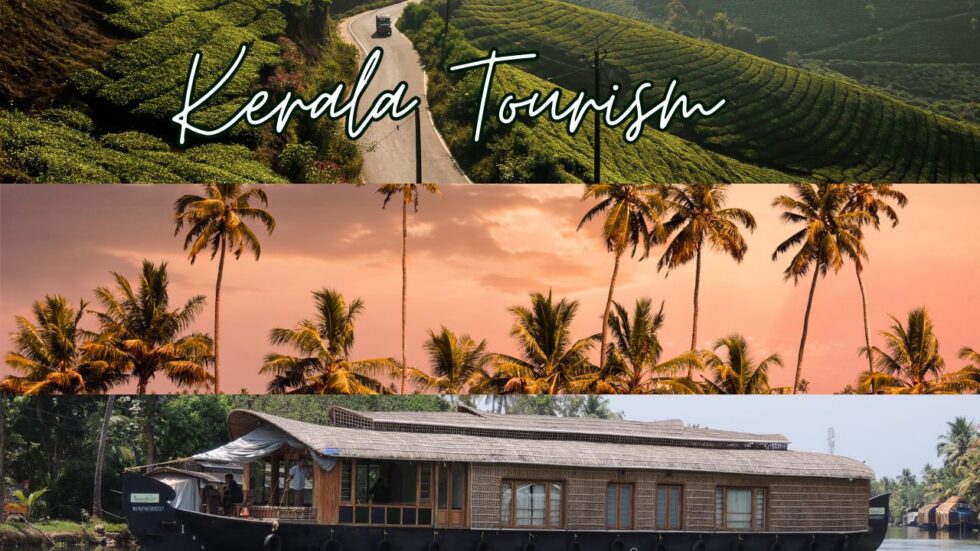
Kerala Tourism is one of India’s most fascinating travel offerings, known for its lush green landscapes, timeless traditions, houseboat backwaters, and rich coastal lifestyle. Located on the southwestern tip of India, Kerala is often called “God’s Own Country”, and for good reason. This coastal state blends natural beauty with heritage, wildlife, food, and unique festivals—all wrapped in a peaceful, slow-paced environment that appeals to every kind of traveler.
Why Kerala Tourism Holds Global Appeal
Kerala isn’t just another destination; it’s an experience. From palm-lined beaches and spice plantations to wildlife sanctuaries and Ayurvedic treatments, Kerala Tourism offers a rare mix of relaxation and cultural depth.
Visitors from across the globe are drawn to Kerala for:
- The scenic backwaters of Alleppey and Kumarakom
- The Western Ghats’ biodiversity and hill stations like Munnar
- Kathakali, Theyyam, and other traditional performances
- Delicious Malabar cuisine with coconut, curry leaves, and spices
- Serene beaches like Varkala and Kovalam
What sets Kerala apart is how harmoniously its natural assets blend with its cultural richness. It’s not about ticking off places; it’s about soaking in a rhythm of life.
Alleppey and the Backwater Journey
No mention of Kerala Tourism is complete without Alleppey. Also known as Alappuzha, this town is the gateway to Kerala’s famed backwaters. The region’s intricate network of canals, lagoons, and rivers forms a calm water world lined by coconut trees and traditional homes.
Tourists typically hire a houseboat for a day or overnight journey. These houseboats, converted from traditional kettuvallams, provide a floating view of Kerala’s life: farmers working in paddy fields, kids splashing in water, and women washing clothes on the banks. Meals are cooked onboard using local produce and recipes. The journey is not rushed—it’s meditative.
Munnar: The Green Heart of Kerala
Munnar is Kerala’s most beloved hill station, especially for couples and nature lovers. Located at over 5,000 feet above sea level, it’s a cool escape from coastal humidity. Tea plantations carpet the hills, forming a pattern of green that’s pleasing to the eye.
Eravikulam National Park nearby is home to the endangered Nilgiri Tahr. Tourists often trek here for the panoramic views and the rare Neelakurinji flowers, which bloom once every 12 years. Echo Point, Mattupetty Dam, and Top Station are other key stops.
What makes Munnar so inviting is its silence. The fog, the slow pace, and the refreshing mountain air combine to make this place unforgettable.
Fort Kochi: Stories in Every Corner
A significant part of Kerala Tourism is its heritage, and Fort Kochi is the perfect place to witness the historic blend of Dutch, Portuguese, and British influences. This coastal town still retains its colonial charm. Walkable streets, old churches, Chinese fishing nets, and centuries-old buildings create a nostalgic mood.
The area is also known for its art. The Kochi-Muziris Biennale, held here every two years, has placed Fort Kochi on the global contemporary art map. Cafes, galleries, and homestays make it ideal for a relaxed cultural experience.
Varkala and Kovalam: Beach Life in Kerala
Though Kerala’s beaches are less hyped than Goa’s, they carry their own quiet appeal. Kerala Tourism has nurtured coastal destinations like Varkala and Kovalam without crowding them.
Varkala stands out because of its cliff-side location. A winding path along the cliff offers stunning views of the Arabian Sea. Yoga retreats, seafood cafes, and a peaceful beach vibe attract solo travelers and spiritual seekers.
Kovalam, closer to Thiruvananthapuram, has long been a favorite for beach holidays. With shallow waters and calm waves, it’s suitable for swimming and catamaran rides.
Ayurvedic Treatments and Wellness
One of the unique aspects of Kerala Tourism is Ayurveda. Kerala is regarded as the birthplace of this 5,000-year-old healing science. Unlike quick spa treatments, Ayurveda in Kerala is a full-body, soul-enriching practice.
Tourists can book 7-day or 14-day wellness programs at certified resorts. These include massages, oil treatments, herbal therapies, and special diets. People with chronic pain, skin disorders, or stress find relief through these personalized routines.
The integration of Ayurveda with yoga and meditation also makes Kerala a global wellness destination.
Periyar Wildlife Sanctuary: Wild Yet Calm
If you’re interested in wildlife and nature, the Periyar Wildlife Sanctuary in Thekkady should be on your list. Set around the Periyar Lake, this sanctuary is home to elephants, tigers, bison, and hundreds of bird species.
Tourists can take guided bamboo rafting tours, nature walks, and jeep safaris. What’s notable here is the peaceful coexistence of humans and animals. Local tribes work with forest officials, adding authenticity and sustainability to the experience.
Periyar reflects how Kerala Tourism balances tourism with ecology.
Festivals and Traditional Art Forms
Kerala’s culture is vibrant yet rooted. Local traditions are still part of everyday life. Kerala Tourism promotes these through curated festivals and village experiences.
- Onam: The biggest harvest festival, marked by floral designs and traditional games.
- Thrissur Pooram: Known for decorated elephants, chenda drums, and fireworks.
- Kathakali: A classical dance-drama using elaborate makeup and gestures.
- Theyyam: A ritualistic performance art from North Kerala with divine costumes and storytelling.
Travelers often return from Kerala not just with photos but with lasting impressions of these rich cultural moments.
Local Food: A Plate of Kerala
Food in Kerala is a sensory journey. Coconut, curry leaves, black pepper, and tamarind are staple ingredients. Rice is the base of most meals.
Must-try dishes include:
- Appam with stew
- Kerala Sadya – a vegetarian feast served on a banana leaf
- Fish Moilee – a mild curry made with coconut milk
- Malabar Biryani – fragrant rice and meat layered with spices
Kerala also offers several food trails and cooking classes for tourists interested in the culinary side of travel. Spice plantations in Thekkady also attract many visitors.
Houseboats vs. Homestays: Where to Stay?
Kerala Tourism offers varied accommodation options for every budget and mood. The two most iconic options are:
Houseboats: Perfect for couples, families, or solo travelers who want a unique overnight stay. Floating through the backwaters, watching sunsets from the deck—this is Kerala at its most poetic.
Homestays: For those who prefer local interactions and authentic food. Many Keralite families open their homes to travelers. These experiences add warmth and stories to your journey.
From luxury resorts to eco-lodges and Ayurveda retreats, Kerala’s hospitality has something for everyone.
Responsible Travel and Eco-Tourism
Kerala has been at the forefront of sustainable tourism. Initiatives by Kerala Tourism include promoting eco-lodges, banning plastic in key tourist areas, and involving local communities in tourism management.
Places like Thenmala (India’s first planned eco-tourism destination) and Wayanad (known for tribal and forest experiences) reflect this approach.
This conscious tourism model not only helps the environment but also ensures that tourism benefits reach villages and small towns, not just big resorts or cities.
Best Time to Visit Kerala
Kerala has a tropical climate and receives heavy monsoon rains. The best season depends on what you’re looking for:
- October to March: Pleasant and ideal for sightseeing
- June to September: Monsoon season—great for Ayurveda, photography, and greenery
- April to May: Hotter months, but less crowded and suitable for hill station trips
Planning around festivals or specific interests (like birdwatching or food tours) can also influence your travel dates.
How to Reach Kerala
Kerala is well-connected by air, rail, and road.
- Airports: Major airports are in Kochi, Thiruvananthapuram, and Calicut
- Trains: Kerala has a dense railway network connecting to most Indian cities
- Roads: National highways and state highways offer scenic drives, especially through the Western Ghats
Whether you fly in, ride a train, or drive, the journey is as memorable as the destination.
Final Thoughts
Kerala Tourism offers more than a holiday—it gives you a taste of a place where nature, culture, and daily life move in harmony. It’s ideal for families looking for calm, couples looking for connection, and solo travelers looking for meaning.
What makes Kerala stand out is its quiet confidence. It doesn’t try too hard to impress. Instead, it simply invites you to slow down, breathe deep, and just be present. That, perhaps, is its real charm.
If you’re planning a trip, let Kerala Tourism show you that real beauty lies in simplicity, warmth, and authenticity..








